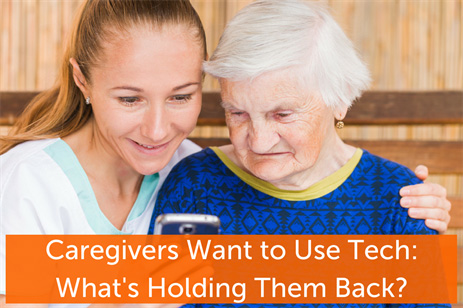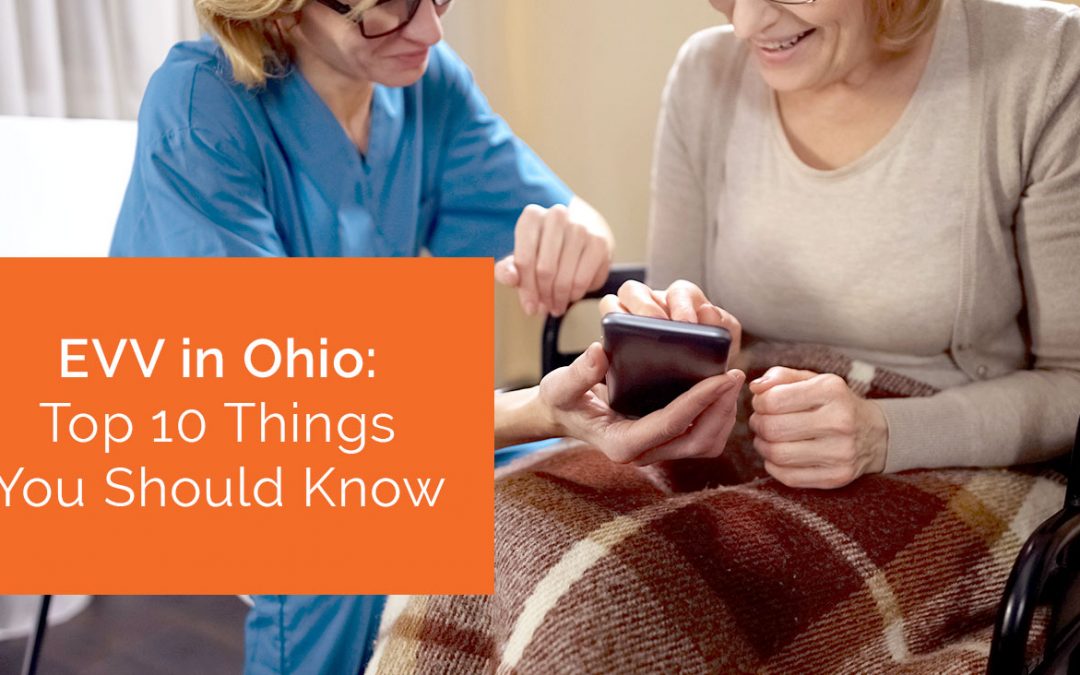Family caregivers are a vital part of the healthcare system. According to Caregiver.org, more than 34 million Americans provide unpaid care for a loved one over age 50 — and the numbers are rising.
Home health work in tandem with family caregivers to ensure that patients receive all the care and services that they need. However, these relationships aren’t always without challenges. Among the most common issues mentioned by family caregivers include problems with scheduling (e.g., home health providers arriving late or not being available when needed) and communication problems. Working with multiple providers and managing all the care instructions can often be confusing and overwhelming, leading to miscommunication and gaps in the quality of care.
Although there are a number of potential solutions to these issues, one of the most promising is home health technology. And as it turns out, caregivers want to use technology. According to a survey from AARP, nearly three quarters of caregivers are open to using technology to support their caregiving responsibilities — but only about 10 percent have actually used such technology in a caregiving capacity. As care coordination becomes a bigger priority in home health, and a requirement of participation in Medicare, HHAs need to be actively exploring ways in which they can provide access to the technological tools that caregivers want — and need — to provide the best possible care for their loved ones.
What Caregivers Really Want
According to the AARP survey, family caregivers have some specific priorities when it comes to their technology needs. Some of the things they want the most include:
- Communication. Family caregivers want to be able to communicate with other members of the care team easily, and have access to important information. For example, if a home health provider visited while the family member was at work, they want to be able to see what happened during the visit and read the provider’s notes.
- Organization and coordination capabilities. Keeping track of schedules and important tasks can be challenging, and caregivers want solutions that allow them to stay on top of appointment, activities and other tasks. Many are already using electronic calendars to keep track of responsibilities, but would like more integrated solutions.
- Medication management. The AARP researchers found that this is the top technological priority for family caregivers, with more than 75 percent saying that a tool that allows them to manage medication adherence, refills, and delivery would be useful.
- Monitoring. Another top priority among family caregivers is monitoring. Again, 75 percent of the survey respondents say that technology that allows them to keep an eye on their loved ones is appealing.
For each of these priorities, there are already solutions on the market to address these issues. So, what’s holding caregivers back?
Barriers to Technological Adoption
For most caregivers, the barriers to adopting existing technological solutions are the same barriers that keep anyone from adopting any solution: Awareness, cost, and ease of use.
The fact is, most caregivers aren’t aware of all the potential solutions available to them and how they can help — and even if they are aware, they cannot afford to invest in them. Take monitoring systems, for example. Only about 10 percent of caregivers use monitoring technologies, which might include cameras, sensors, and alarms. The majority of caregivers believe that such systems are too complex and costly to operate, and thus don’t use them. And given that caregivers are often busy and already have a full plate of responsibilities, technology that isn’t fully functional and ready to go out of the box isn’t necessarily appealing — especially when it only does one thing. Simply put, caregivers want integrated fully functional systems, i.e., a system that allows them to both manage their loved ones’ medication and home health visit schedule and order prescription refills from a single interface.
As a home health agency, you can help bridge the technological divide by using tools that meet caregivers’ needs. Web-based home healthcare software with a communication portal, for example, allows your patients’ families to access information about their loved one and stay in communication with providers. These solutions can also help streamline scheduling and make it easier for caregivers to manage all of their tasks — without having to invest time and money into a standalone solution.
Home health software is just one area in which caregivers can access the technology that they want. A number of companies are working on ideas that can streamline caregiving and ease the burden on caregivers. However, HHAs can lead the way by providing easy-to-use tools as part of their service and by implementing technology into their care delivery.
Discover more about Complia Health’s home health software options and how it can improve your agency by contacting us and scheduling a demonstration.




